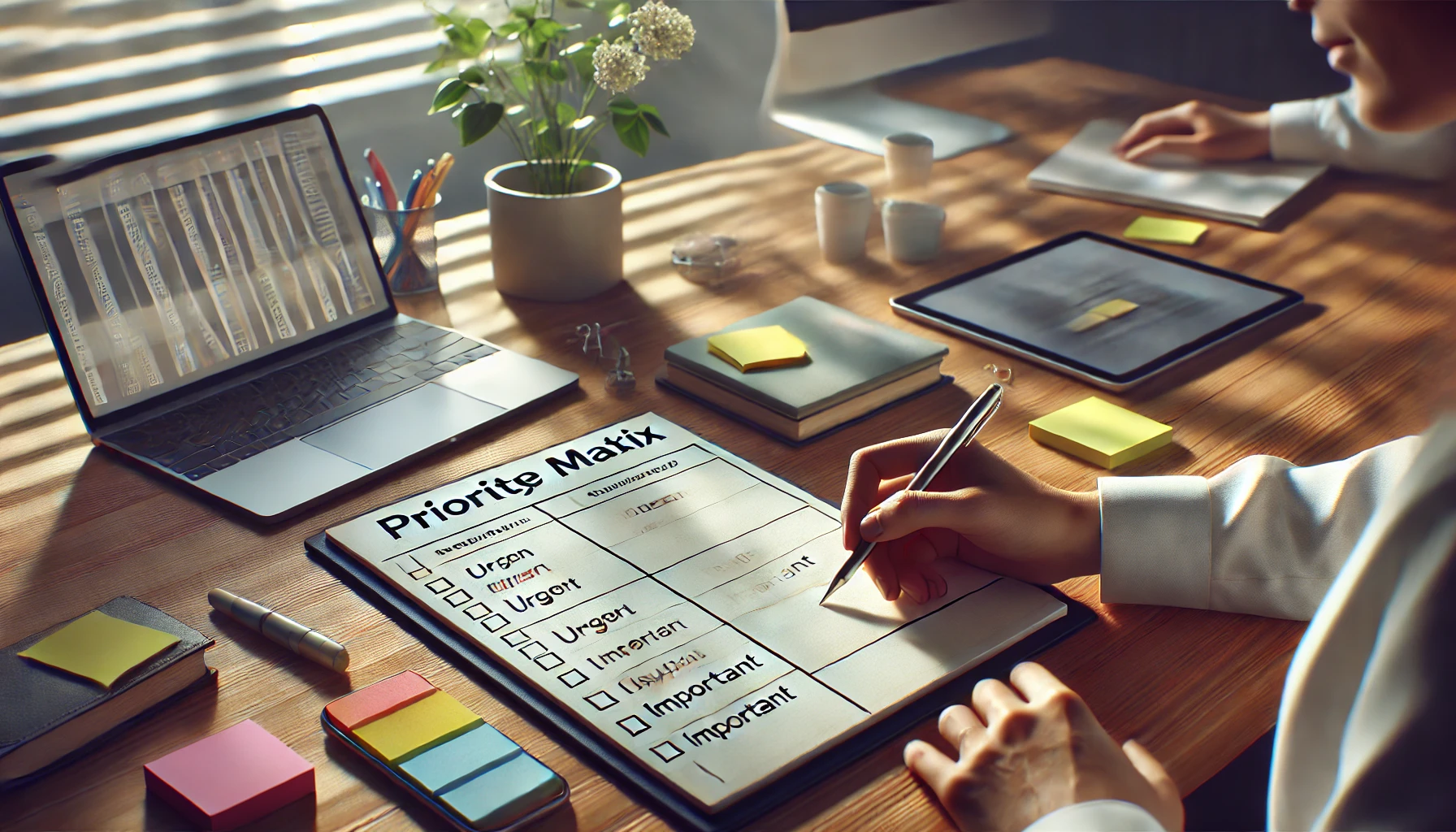You open your planner, your inbox, or your mental to-do list—and everything feels urgent. Deadlines. Messages. Projects. Chores. It’s overwhelming, and the pressure builds.
The problem? When everything feels important, nothing gets done well.
Prioritizing is a skill—and learning how to do it effectively will save your time, energy, and sanity.
Let’s break it down step by step.
1. Accept That You Can’t Do Everything
Let’s start with the truth: you’re not supposed to do it all. You’re supposed to do the right things—the things that truly matter.
Trying to tackle everything at once leads to burnout and shallow work. Effective prioritization means choosing wisely, not doing endlessly.
2. Write Everything Down
Before you can prioritize, get all your tasks out of your head and onto paper (or an app). This “brain dump” gives you a clear picture of what you’re working with.
Try This:
- List everything on your mind—no filter
- Don’t organize yet, just capture
- Use a notebook, Notion, Google Keep, or a whiteboard
Clarity starts with visibility.
3. Use the Eisenhower Matrix
This simple framework helps you quickly sort tasks based on urgency and importance.
The Matrix:
| Urgent | Not Urgent | |
|---|---|---|
| Important | Do Now | Schedule It |
| Not Important | Delegate It | Eliminate It |
Example:
- Do Now: Project due today
- Schedule: Long-term planning, exercise
- Delegate: Team emails, errands
- Eliminate: Unnecessary meetings, distractions
It forces you to focus on what truly matters—not just what screams the loudest.
4. Apply the 1-3-5 Rule
If your daily list is too long, you’ll freeze. The 1-3-5 method helps you stay realistic.
Every Day, Choose:
- 1 big task
- 3 medium tasks
- 5 small tasks
This creates structure while giving you room for wins of all sizes.
5. Identify High-Impact Tasks
Some tasks matter more than others—not because they take more time, but because they produce bigger results.
Ask:
- What will make the biggest difference today?
- What moves me closer to my goals?
- What would make everything else easier or unnecessary?
These are your high-leverage tasks. Prioritize them early in the day.
6. Consider Your Energy Levels
Not all tasks fit every moment. Align your work with your natural energy curve.
Example:
- Mornings = deep focus tasks (writing, strategy)
- Afternoons = lighter tasks (emails, admin)
- End of day = review, plan, wrap-up
Prioritization isn’t just what—but when.
7. Say No (Or Not Now)
Every “yes” is a “no” to something else. Part of prioritizing is protecting your time from low-value commitments.
Practice Saying:
- “I can’t take that on right now.”
- “Let me finish what I’m currently focused on.”
- “Can we revisit this next week?”
Boundaries create room for what matters.
8. Use Visual Priority Tools
Color coding, labels, or numbering can help you see what’s most important.
Ideas:
- Use red for urgent, green for high-value
- Star your top 3 tasks
- Use A-B-C labels (A = must do, B = should do, C = nice to do)
Make it impossible to ignore your real priorities.
9. Reflect and Re-Prioritize Daily
Priorities shift. That’s normal. The key is to recalibrate often.
End-of-Day Habit:
- What did I complete?
- What’s still pending?
- What’s my new top priority for tomorrow?
This keeps your task list flexible and your focus sharp.
Prioritization Isn’t Just a To-Do Skill—It’s a Life Skill
When you learn to prioritize, you don’t just manage your tasks—you manage your time, energy, and attention more intentionally.
So don’t try to do it all.
Do what matters most, first.
And trust that progress builds from there—one focused task at a time.
